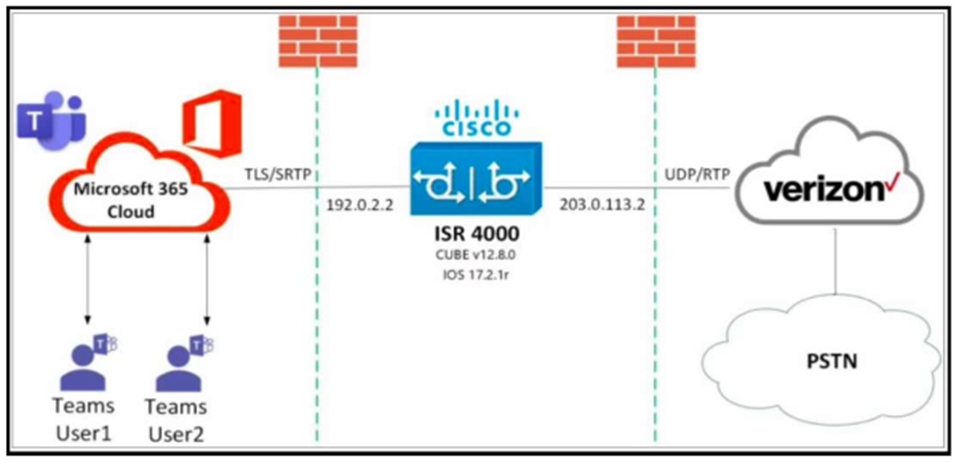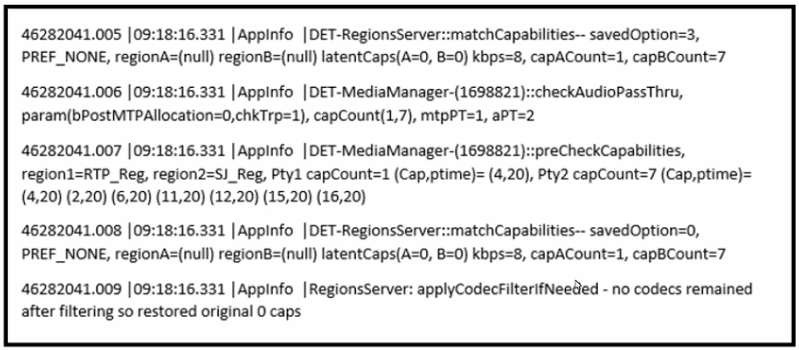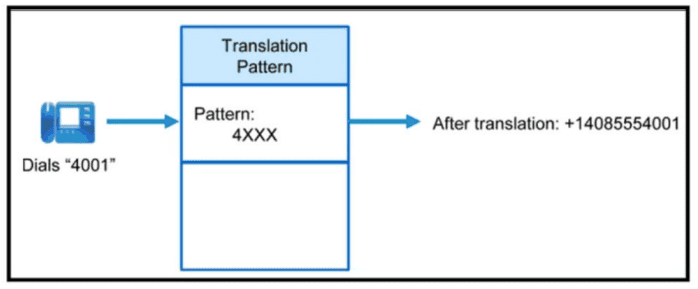Cisco 300-815 - Implementing Cisco Advanced Call Control and Mobility Services (CLACCM)
A company has an SRST gateway running an IOS XE image. The company plans to enable the IPv6 addressing companywide. To enable the IPv6 in a unified SRST gateway to support SIP phones, what are two supported supplementary features for an IPv6 fallback scenario? (Choose two.)

Refer to the exhibit. A company is using Microsoft Teams with Cisco Unified Border Element integration, but the administrator sees a one-way audio issue with Microsoft Teams. The administrator must modify the SIP profile to send the proper information on the SDP for IP address for media to match the internal and external interface. Which set of commands resolves the issue?
In Cisco Unified Communications Manager, which tool do you use to check SIP traces?
When configuring hunt groups, where do you add the individual directory numbers that will be part of the group?
A Cisco UCM-based solution uses URI-based calling for Cisco Jabber clients. The solution has several clusters in different locations. The solution being configured must have a secure method o* exchanging addresses between the clusters. Which action ensures that a configuration complies with the requirements?
Refer to the exhibit.

Users report that when they dial the emergency number 9911 from any internal phone, it takes a long time to connect with the emergency operator. Which action resolves this issue?
Exhibit.

Refer to the exhibit. All calls from site A to site B are failing, and the issue has been identified as a media negotiation problem. Which configuration change resolves the issue?
A network engineer designs a new dial plan and wants to block a certain range of numbers (8135100 through 8135105). What is the most specific route pattern that can be configured to block only the numbers in this range?
Where is the dtmf-relay command configured on Cisco Unified Border Element?
Refer to the exhibit.

A company needs to ensure that all calls are normalized to ♦ E164 format. Which configuration will ensure that the resulting digit string ♦14085554001 is created and will be routed to the E.164 routing schema?



